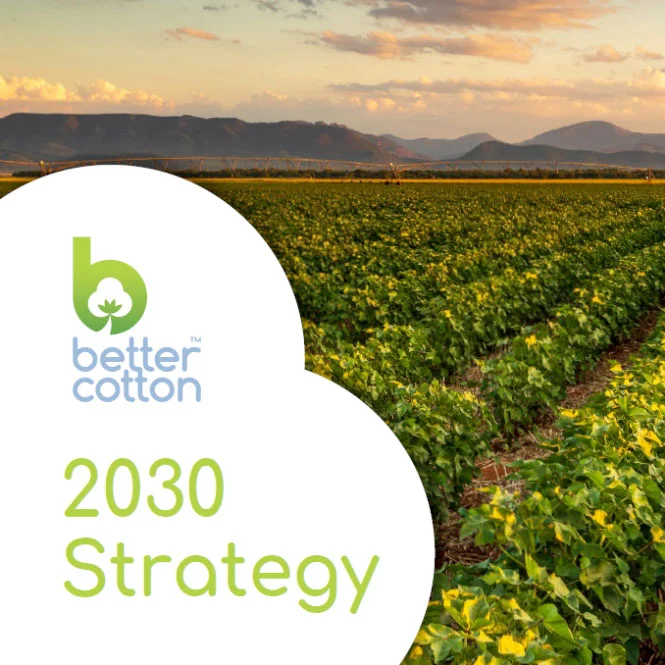- Who we are
- What we do
In just over 10 years we have become the world’s largest cotton sustainability programme. Our mission: to help cotton communities survive and thrive, while protecting and restoring the environment.
- Where we grow
Better Cotton is grown in 22 countries around the world and accounts for 22% of global cotton production. In the 2022-23 cotton season, 2.13 million licensed Better Cotton Farmers grew 5.47 million tonnes of Better Cotton.
- Our impact
- Membership
Today Better Cotton has more than 2,700 members, reflecting the breadth and diversity of the industry. Members of a global community that understands the mutual benefits of sustainable cotton farming. The moment you join, you become part of this too.
- Associate Membership
- Civil Society Membership
- Producer Organisation Membership
- Retailer and Brand Membership
- Supplier and Manufacturer Membership
- Find Members
- Member Monitoring
- Better Cotton Platform
- myBetterCotton
- Resources – Better Cotton Conference 2022
- Complaints
- Whistleblowing
- Safeguarding
- Get Involved in the Better Cotton Programme
- Thank you for contacting us
- Better Cotton’s Data Privacy Policy
- Log in
- Members’ Area
- Request for Proposals
- Better Cotton Cookie Policy
- Web Reference
- Measuring Cotton Consumption
- How to Implement the Chain of Custody Standard
- Resources – Better Cotton Conference 2023
- Certification Bodies Old
- Latest
- Sourcing
- Latest
The founding premise of Better Cotton is that a healthy sustainable future for cotton and the people that farm it is in the interests of everyone connected with it.
Let us help you find what you’re looking for
Results for {phrase} ({results_count} of {results_count_total})Displaying {results_count} results of {results_count_total}
By Chelsea Reinhardt, Director, Standards & Assurance
Regenerative agriculture seems to be on everyone’s radar these days. From new regenerative agriculture certifications to sourcing commitments from big brands, the concept is gaining traction.

Many regenerative practices are already woven into the Better Cotton Standard System, and as the research and conversations around regenerative agriculture evolve, we are working to deepen our impact along with it.
Below, we discuss regenerative agriculture as it relates to Better Cotton — from how we define it to our approach moving forward.
What is Regenerative Agriculture?
While there is currently no universally accepted definition of regenerative agriculture, it is generally related to practices that promote soil health and restore organic carbon in the soil. These practices may include reducing tilling (no-till or low-till), use of cover crops, complex crop rotation, rotating livestock with crops and avoiding or minimising the use of synthetic fertilisers and pesticides — practices that have the potential to turn agricultural soil into a net carbon sink.
Regenerative Agriculture in the Better Cotton Standard
We don’t currently use the term ‘regenerative agriculture’ in the Better Cotton Standard. However, what is considered regenerative agriculture today is aligned with many of the sustainable farming practices that form the basis of our Standard. Our on-the-ground Implementing Partners in 23 countries around the world support farmers to implement these practices, which can be found throughout the Better Cotton Principles and Criteria.
Regenerative Agriculture in the Better Cotton Principles and Criteria
- Principle 3 on Soil Health: Better Cotton Farmers are required to implement a multi-year soil management plan which covers enhancing soil structure, soil fertility and improving nutrient cycling, which includes processes such as breaking down of organic matter and soil respiration that facilitates uptake of soil nutrients like carbon, nitrogen and phosphorous. Farmers are encouraged and supported to identify practices that are most appropriate to their local context. These typically include cover cropping, crop rotation, mulching and other regenerative methods.
- Principle 4 on Biodiversity and Land Use: Better Cotton Farmers must adopt a biodiversity management plan which explicitly encourages crop rotation and the restoration of degraded areas.
- Other Better Cotton Principles: Due to the interconnected nature of sustainable farming practices, regenerative agriculture practices are embedded within other principles as well. For example, principle one on crop protection introduces an Integrated Pest Management Programme to help farmers reduce their pesticide use and principle two on water stewardship details soil moisture practices such as mulching and cover cropping.
How We’re Diving Deeper into Regenerative Agriculture for Greater Impact
While we recognise the value of regenerative agriculture practices and support the growing awareness of the role of farming in combatting climate change, we are cautious about making promises about soil carbon contributions while the science in this area is still evolving. For example, although no-till agriculture has been shown to improve carbon sequestration in the short term in many cases, in the long term, the outcomes are less certain. Some studies have shown that even periodic ploughing can reverse years of carbon benefits. Other research points to mixed impacts on soil organic carbon, depending on the content and depth of the soil layer.
Regardless of the long-term carbon benefits of regenerative agriculture, we will continue to focus on supporting farmers to improve their soil health. This is crucial to enhance long-term soil fertility, reduce erosion and adapt to climate change. It also plays a key role in improving yields and livelihoods for farming communities.
What’s Next
Climate-smart agriculture practices will play a more prominent role in the Better Cotton Standard after an upcoming revision of the Better Cotton Principles and Criteria. They will also feature strongly in our 2030 Strategy and connected climate change strategy, which will cover how Better Cotton Farmers and communities can become more resilient by mitigating and adapting to the effects of climate change, reducing carbon emissions and measuring their progress.
An approach of continuous improvement is at the heart of both regenerative agriculture and our 2030 Strategy. To that end, we are currently in the process of finalising outcome targets and associated indicators to act as drivers of change for Better Cotton Farmers. The outcome target issue areas will likely include climate change mitigation and soil health. These targets will enable progress to be measured towards the Better Cotton mission and incentivise farmers to find new ways to enrich the environment in and around their farms.
Stay tuned — we will be sharing more information on these targets and launching our 2030 Strategy at the end of the year.


